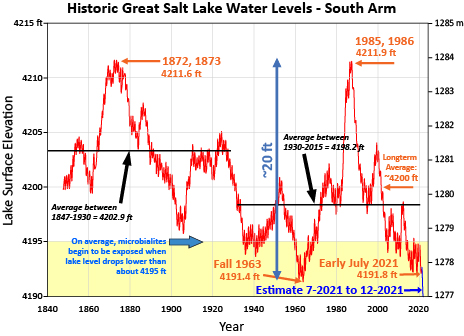Researchers in Utah are raising the alarm about the potential collapse of the Great Salt Lake ecosystem as low water levels threaten to destroy fragile colonies of microbes that underpin that system.
Michael Van Denberg, senior geologist with the Utah Geological Survey says that underwater reef-like rock mounds called microbialites, are at risk of being exposed to the air.
“When the lake level comes down and these structures become exposed, the microbes can’t survive – and the beautiful microbial mat that lives on top of these structures will begin to erode off the top,” Van Denberg told KCPW.

Dr. Bonnie Baxter with Great Salt Lake Institute at Westminster College says the situation could spell doom for the wildlife the lake supports, because the microbes form the base of the entire ecosystem.
“The simple food chain that people know about the lake is that birds come to the lake and they eat the invertebrates – the brine shrimp and the brine flies,” Baxter said.
“But the brine shrimp and brine flies depend on these structures [and] we’re afraid that if these microbialites are threatened the whole ecosystem will collapse,” she said.
The Great Salt Lake’s water level is projected to drop below the historic low of 4191.4 feet in the coming days and may continue to drop well into the fall.

Geologist Van Denberg says that while it takes little time for the microbial mats to die, it can take years for them to recover if and when they are resubmerged in water.
Baxter says that millions of already imperiled migrating birds can’t wait years for the recovery of their food source. The death of the Great Salt Lake’s microbialites, she says, could represent a “whole domino effect in the West” for birds.
How do you feel about this topic?
Is there anything else you think we should know? We'd like to hear your thoughts. Send us your feedback using the form below.




